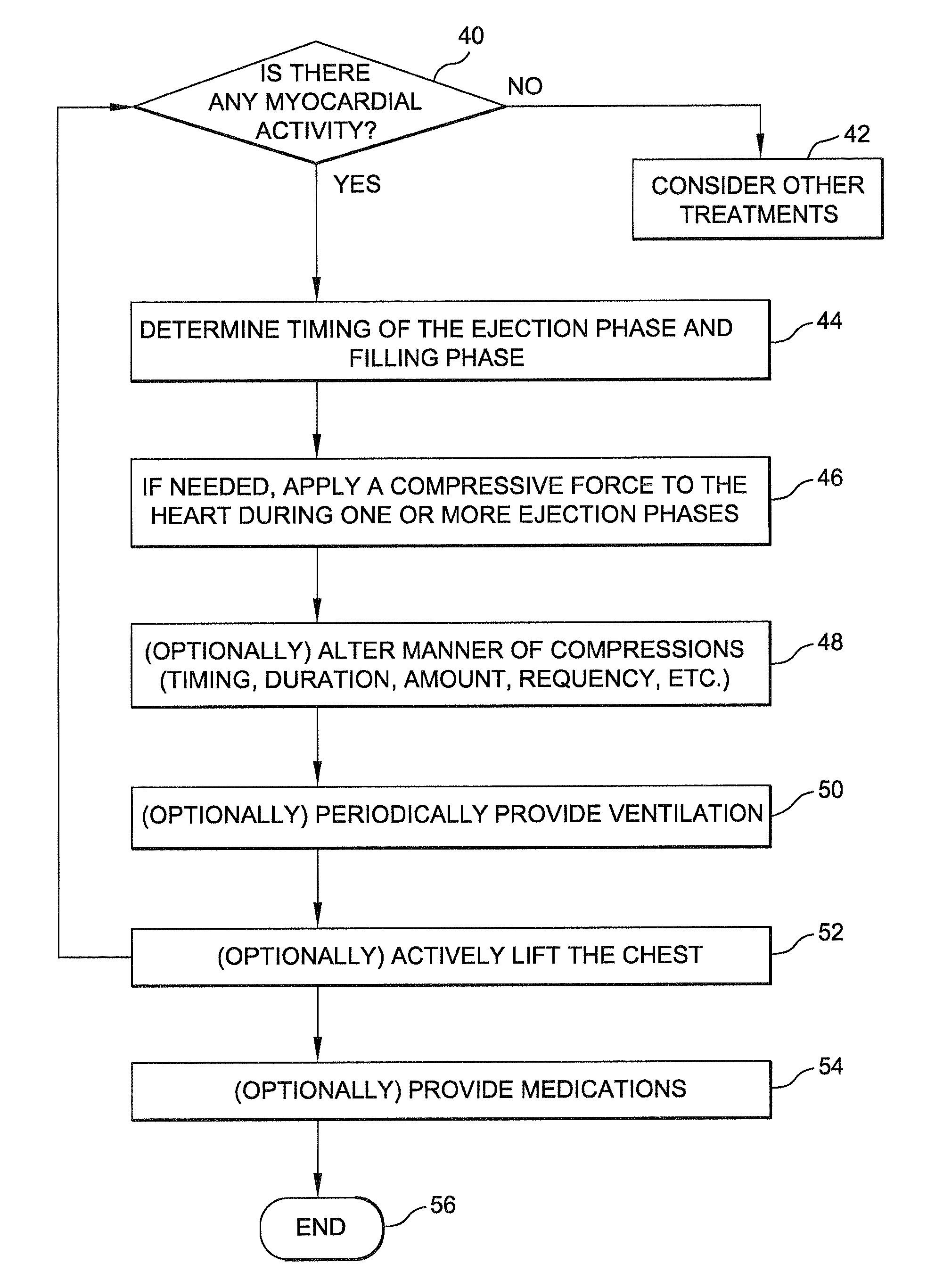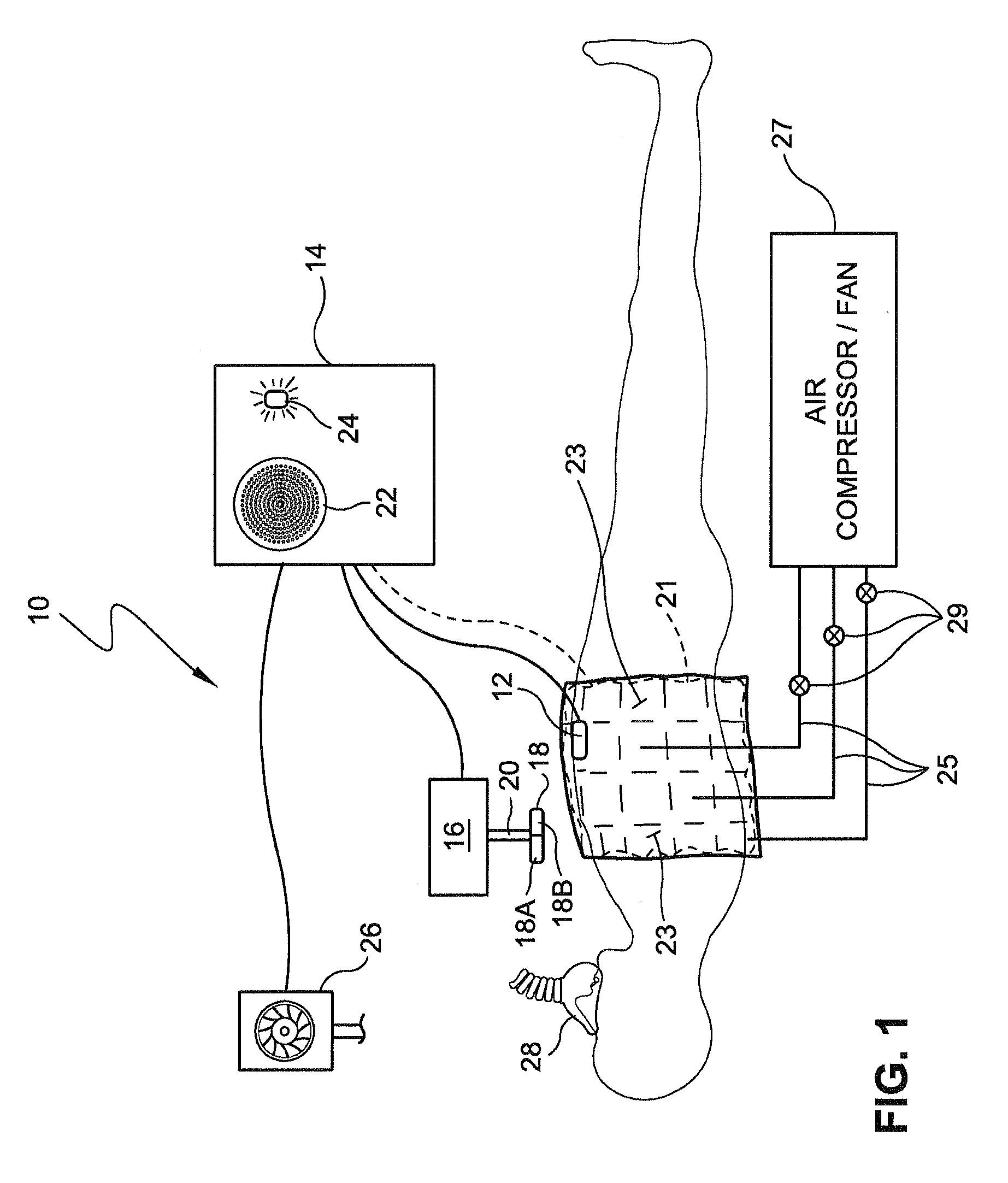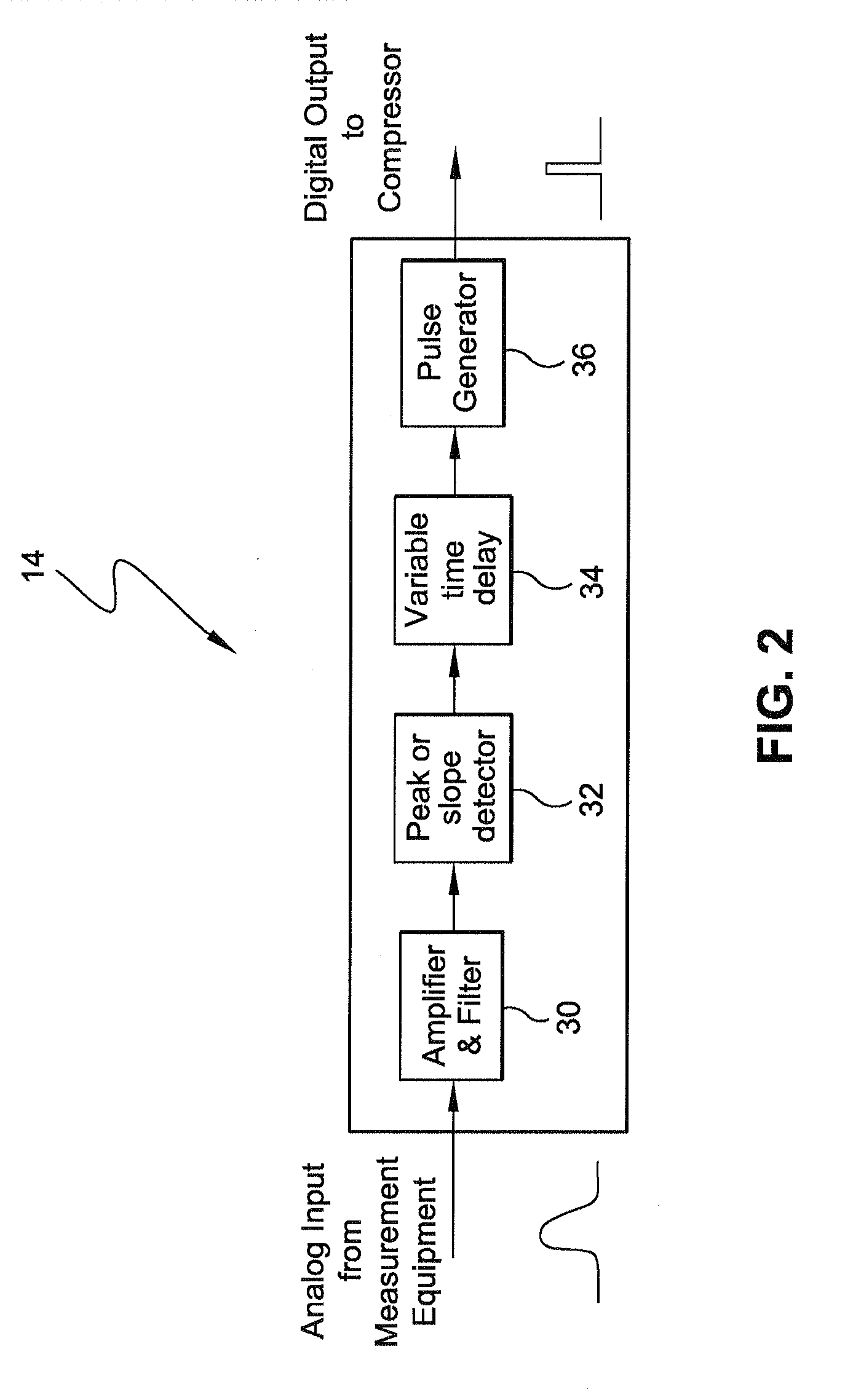Non-invasive device for synchronizing chest compression and ventilation parameters to residual myocardial activity during cardiopulmonary resuscitation
a non-invasive, cardiac resuscitation technology, applied in the field of cardiac medicine, can solve the problems of complete loss of residual myocardial function, true cardiac arrest, and significant decrease in cardiac output, so as to improve cardiac function and reduce cardiac output.
- Summary
- Abstract
- Description
- Claims
- Application Information
AI Technical Summary
Benefits of technology
Problems solved by technology
Method used
Image
Examples
Embodiment Construction
[0048]The invention relates to techniques and devices that may be used to increase cardiac output for patients suffering from a wide variety of ailments ranging from shock to pulseless electrical activity (PEA) where the patient appears to be lifeless yet has some residual mechanical heart activity. One exemplary technique of the invention is to sense when the heart is beating and then synchronize chest compressions, or other resuscitative techniques, with movement of the myocardial wall. In this way, various techniques may be used to optimally synchronize chest compressions (or other elements of CPR) with residual left ventricular function to improve the outcome of such patients. Hence, the invention may be used to synchronize the compression force of external devices, on or around the chest, with the ejection phase of the residual left ventricular function, and the relaxation phase with residual cardiac filling. In another aspect, the system and method disclosed herein provides va...
PUM
 Login to View More
Login to View More Abstract
Description
Claims
Application Information
 Login to View More
Login to View More - R&D
- Intellectual Property
- Life Sciences
- Materials
- Tech Scout
- Unparalleled Data Quality
- Higher Quality Content
- 60% Fewer Hallucinations
Browse by: Latest US Patents, China's latest patents, Technical Efficacy Thesaurus, Application Domain, Technology Topic, Popular Technical Reports.
© 2025 PatSnap. All rights reserved.Legal|Privacy policy|Modern Slavery Act Transparency Statement|Sitemap|About US| Contact US: help@patsnap.com



